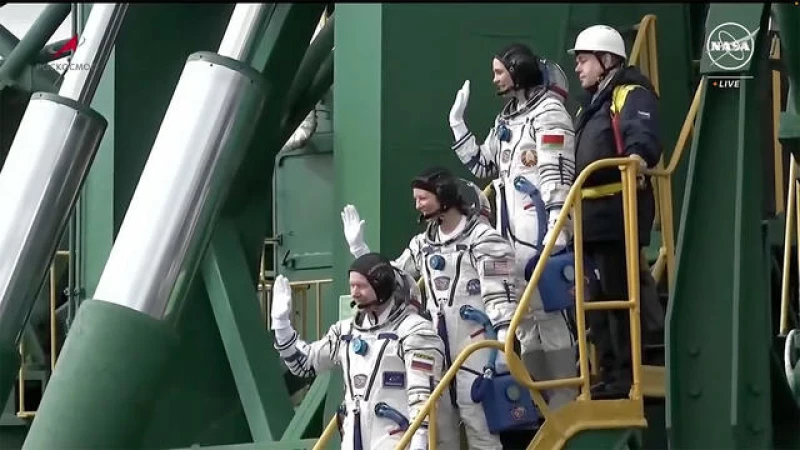Just two days following a unique last-minute launch cancellation, a Russian Soyuz spacecraft took off on Saturday for a journey to the International Space Station. The spacecraft is carrying two short-duration crew members and a NASA astronaut who will be embarking on a six-month mission.
Commander Oleg Novitskiy, Belarus guest cosmonaut Marina Vasilevskaya, and NASA veteran Tracy Dyson lifted off from the Baikonur Cosmodrome at 8:36 a.m. EDT (5:36 p.m. local time) and entered orbit eight minutes and 45 seconds later.
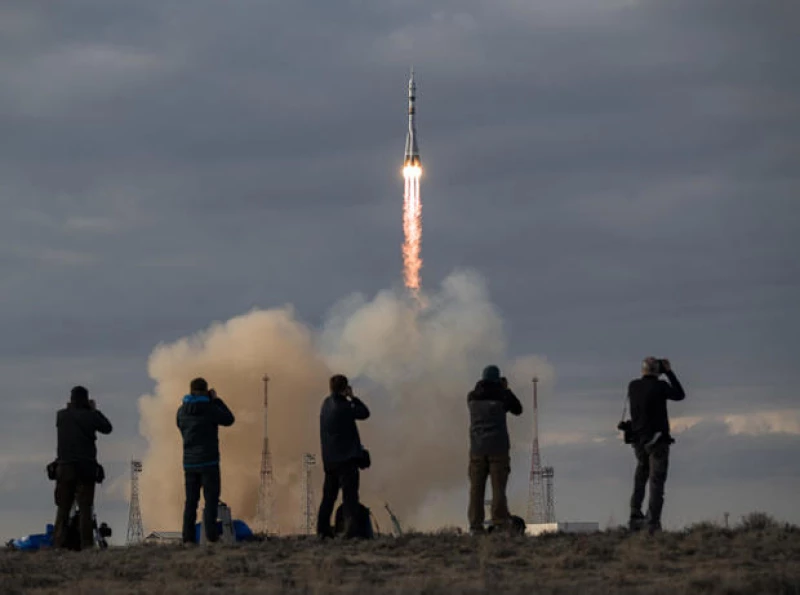
The launch was initially scheduled for the previous Thursday, but was halted within 20 seconds of liftoff due to low voltage readings detected in the first stage electrical system of the Soyuz 2.1a rocket.
This marked the first time such an abort has occurred for a Soyuz rocket. Russian engineers spent a day analyzing telemetry data, identifying the issue, and replacing the problematic batteries. Subsequent tests confirmed that all systems were ready for a successful second launch attempt on Saturday.
As the Soyuz countdown ticked toward a late afternoon launch in Kazakhstan, a SpaceX Dragon cargo ship launched Thursday from the Cape Canaveral Space Force Station caught up with the space station and moved in for docking at 7:19 a.m. local time, bringing 6,200 pounds of science gear, spare parts and crew supplies to the lab complex, including fresh food and coffee kits.
The Soyuz is expected to catch up with the space station Monday, moving in for docking at a port on the station's Earth-facing Prichal module at 11:09 a.m. local time.
Standing by to welcome them aboard will be station commander Oleg Kononenko, cosmonauts Nikolai Chub and Alexander Grebenkin and NASA astronauts Loral O'Hara, Matthew Dominick, Michael Barratt and Jeanette Epps.
Vasilevskaya, an accomplished ballroom dancer and flight attendant with Belavia Airlines, is the first citizen of Belarus, a staunch ally of Russia, to fly in space since the breakup of the Soviet Union.
She was selected as a "spaceflight participant" in a nationwide competition and will conduct research for scientists in Belarus as part of a program known as the Belarusan Woman in Space.
Dyson is making her third spaceflight and her second aboard a Soyuz. Despite the political tension between the United States and Russia, the crew appears to get along well together.
"It's actually been a real delight working with Marina," Dyson said. "She's got a fantastic attitude, and that goes a long way when you're working together with emergency masks on your face in awful conditions trying to get through (emergency training) procedures. She's been a real delight to work with."
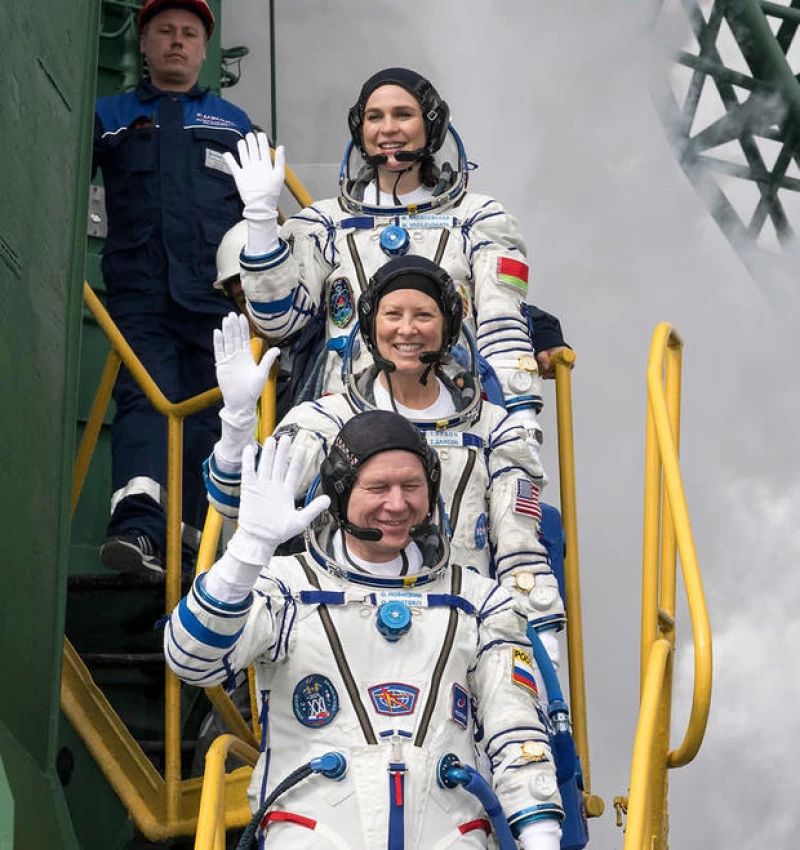
Kononenko, Chub and O'Hara were launched to the station last Sept. 15 aboard the Soyuz MS-24/70S spacecraft. Dominick, Barratt, Epps and Grebenkin were launched on March 3 aboard a SpaceX Crew Dragon ferry ship. Known as Crew 8, they replaced four other Crew Dragon fliers -- Crew 7 -- who returned to Earth March 12 after a short handover.
Novitskiy and Vasilevskaya plan to spend 12 days aboard the space station. O'Hara will replace Dyson for the trip home and the trio will return to Earth April 6 aboard the Soyuz MS-24/70S spacecraft that carried O'Hara, Kononenko and Chub into orbit last September.
Kononenko and Chub are midway through a planned yearlong stay aboard the station. If all goes well, they will return to Earth next September, along with Dyson, using the Soyuz MS-25/71S ferry ship delivered by Novitskiy's crew.
With O'Hara's return, five of the station's seven full-time crew members will have been replaced, completing the latest crew rotation sequence.
Dyson first flew aboard the space shuttle Endeavour for a 13-day space station visit in 2007. Three years later, she blasted off aboard a Soyuz spacecraft as a long-duration station crew member, logging 176 days aboard the outpost between April and the end of September 2010.
Space Traveler Reflects on Experience
Reflecting on her recent space journey, a now-famous picture of Dyson shows her gazing down at the Earth from the lab's multi-window Cupola compartment.
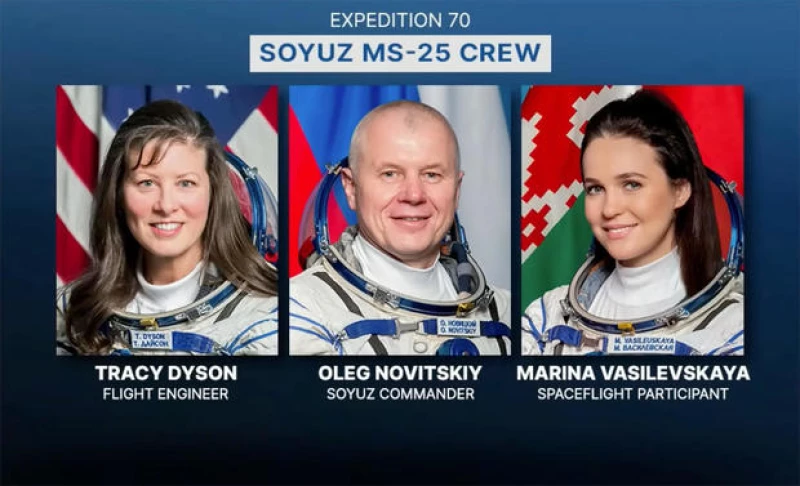
In a recent interview, Dyson expressed her readiness to help others on future flights. She mentioned, "Part of the beauty of living on board is being part of a crew and a team and helping each other out."
She further added, "I have such a great memory (of the experience) and that cupola shot certainly captures that, of viewing the Earth. And that just never gets old."
However, Dyson acknowledged the rigorous training required for such missions.
"That's the toughest part about what we do, the training, which requires us to be away from home for long periods of time," she said. "When I did this on my first two flights, it was not as bad because it was really just me at home. I had a dog that others were willing to take care of. My husband was deployed on a ship."
"But now it's a little different, and I have a lot of support from my family, who's reminded me over and over that I'm that I'm doing this for them as much as I'm doing it for myself."
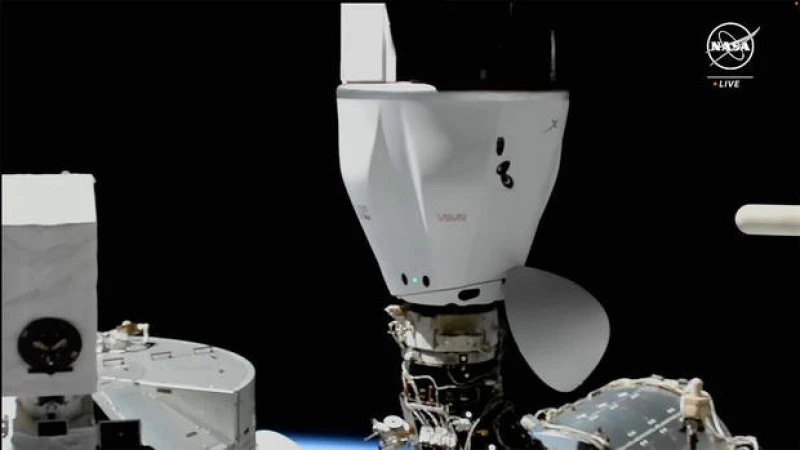
She will face a very busy six months in space.
Boeing's Starliner ferry ship, a NASA-sponsored alternative to SpaceX's already proven Crew Dragon, is expected to take off on its first piloted test flight in early May, carrying NASA astronauts Butch Wilmore and Sunita Williams to the space station on a shakedown flight.
If the flight goes well, the Starliner will be certified for use in future ISS crew rotation missions, alternating with SpaceX's Crew Dragon and providing NASA with redundancy when it comes to launching astronauts to and from the space station.
"Today, all of our Crew Dragons are launching on (SpaceX Falcon 9 rockets)," said space station Program Manager Dana Weigel. "If there was a problem with F9, for example, and we had to stand down for a while ... if we had another vehicle we could continue flying."
And that would help make sure one or more American astronauts is always on board the space station.
"That's why, when we discuss the importance of having multiple providers, it is crucial for us to maintain that continuous capability," Weigel emphasized.
NASA has scheduled three spacewalks, or EVAs, for June to complete various tasks, including preparations for adding a final set of roll-out solar array blankets.
Although astronauts have not yet been selected for the missions, Dyson, a seasoned spacewalker, may be chosen by NASA to venture outside once again.
"We have three EVAs planned for our increment, and I am one of the spacewalkers trained for those EVAs," she mentioned. "We will wait and see how the assignments unfold and who will participate in the spacewalks."

